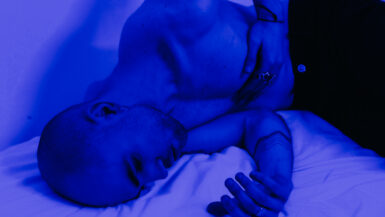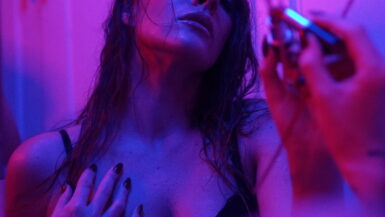In today’s fast-paced digital world, we are constantly surrounded by screens emitting blue light, which can have detrimental effects on our sleep patterns and overall productivity. It is crucial to understand the science behind blue light and its impact on our well-being, in order to make informed decisions about the most effective solutions for mitigating its adverse effects. In this comprehensive article, we will delve into the various blue light blocking solutions available, analyzing their effectiveness, and guiding you in making the best choice for your needs. From specialized eyewear to screen filters, we will explore the pros and cons of each option, enabling you to make a well-rounded decision and ultimately enhance your sleep quality and productivity. So, let us embark on this illuminating journey towards a healthier, more productive lifestyle.
Tips for Effectively Incorporating Blue Light Blockers into Your Routine
Integrating blue light blocking solutions into your daily routine can be both seamless and effective, but it’s important to choose the right strategies that suit your needs and lifestyle. In this subsection, we will discuss various tips and techniques for incorporating blue light blockers into your routine, which will ultimately contribute to better sleep and enhanced productivity.
Find the Perfect Blue Light Blocking Eyewear
As one of the most popular solutions for reducing blue light exposure, specialized eyewear can be a convenient and stylish option. When choosing blue light blocking glasses, look for lenses that block at least 90% of blue light and are comfortable to wear for extended periods. Additionally, consider investing in a pair with an anti-reflective coating to minimize glare and eye strain.
Adjust Your Device Settings
Many electronic devices offer built-in settings to reduce blue light emissions. This can be an easy and cost-effective solution for mitigating the effects of blue light on your sleep and productivity. For example, smartphones and computers often have a “night mode” or “blue light filter” setting, which can be scheduled to activate automatically during evening hours.
Create a Blue Light-Free Sanctuary
Designating a specific area of your home as a blue light-free zone can provide a calming environment conducive to relaxation and sleep. This might involve removing electronic devices from your bedroom or using dim, warm lighting in your living space during the evening. Establishing a relaxing bedtime routine can further help counteract the stimulating effects of blue light exposure.
Limit Screen Time Before Bed
Reducing your screen time during the evening hours can significantly minimize your blue light exposure and promote better sleep. Aim to turn off electronic devices at least one hour before bedtime, allowing your body to wind down and transition into a more restful state. Instead, engage in relaxing activities such as reading a physical book, meditating, or taking a warm bath.
Stay Informed about Blue Light and Its Effects
Staying abreast of the latest research on blue light and its impact on sleep and productivity can help you make informed decisions about the best strategies for mitigating its effects. For instance, understanding the connection between blue light and weight gain can be an eye-opener. Learn more about this topic by visiting The Effect of Blue Light on Sleep and Weight Gain article.
By implementing these practical tips and being proactive in minimizing your exposure to blue light, you can enhance your sleep quality, boost productivity, and enjoy a healthier lifestyle.
Evaluating the Cost and Overall Value of Blue Light Blocking Solutions
When choosing the best blue light blocking solution, it’s essential to strike the right balance between cost and effectiveness. In this subsection, we will analyze various blue light blocking options in terms of their cost, ease of use, and overall value. Armed with this knowledge, you can make an informed decision that suits your budget and lifestyle, while effectively mitigating the effects of blue light on your sleep and productivity.
Blue Light Blocking Glasses: A Worthwhile Investment?
Blue light blocking glasses are among the most popular solutions for reducing blue light exposure. They are available in a range of prices, from affordable options to more expensive, high-end brands. While investing in a quality pair of blue light blocking glasses might initially seem costly, the potential long-term benefits to your sleep quality and overall well-being can make it a worthwhile investment.
Screen Filters: A Budget-Friendly Solution with Limitations
Another option for reducing blue light exposure is applying a screen filter to your electronic devices. These filters are generally more affordable than specialized eyewear, making them an appealing option for budget-conscious individuals. However, their effectiveness may be limited, as they do not block blue light from all sources, such as overhead lighting or sunlight. Additionally, screen filters may not be available for all device types and sizes.
Software Solutions: Free or Low-Cost Digital Alternatives
Software solutions, such as apps and built-in device settings, can be an affordable and accessible way to reduce blue light exposure. Many of these options are either free or available at a minimal cost. However, relying solely on software solutions may not provide complete protection from blue light, especially if you use multiple devices or are exposed to blue light from non-digital sources.
Considering the Intangible Benefits of Blue Light Blocking Solutions
When evaluating the cost and overall value of blue light blocking solutions, it’s crucial to consider the intangible benefits that can come from better sleep and increased productivity. Improved sleep quality can lead to numerous health benefits, including a stronger immune system, better mental health, and enhanced cognitive function. Similarly, increased productivity can have a positive impact on your career and personal life. These intangible benefits should be factored into your decision-making process when determining the best blue light blocking solution for you.
Taking the time to carefully weigh the costs and overall value of various blue light blocking solutions will enable you to make a well-informed decision that fits your budget and lifestyle. By prioritizing your sleep and productivity, you can experience the numerous health and well-being benefits that come with reduced blue light exposure.
Understanding the Effects of Blue Light on Sleep and Productivity
In order to choose the best blue light blocking solution, it is vital to first comprehend the impact of blue light on our sleep patterns and productivity levels. In this subsection, we will delve into the science behind blue light exposure, exploring the ways it can disrupt our circadian rhythm, hinder our sleep quality, and subsequently affect our daily performance. By grasping the significance of these effects, you will be better equipped to make an informed decision when selecting the most suitable blue light blocking solution for your needs.
The Science Behind Blue Light and Circadian Rhythms
Blue light is a high-energy visible (HEV) light with wavelengths between 400 and 495 nm. It is emitted by electronic devices such as smartphones, laptops, and televisions, as well as energy-efficient LED and fluorescent lights. Research has shown that exposure to blue light, particularly in the evening, can interfere with our body’s production of the sleep hormone melatonin, leading to disruptions in our circadian rhythm – the body’s internal clock that regulates sleep and wake cycles.
The Connection Between Blue Light Exposure and Sleep Quality
When our circadian rhythm is disrupted, our sleep quality suffers. Studies have linked prolonged blue light exposure in the evening to difficulty falling asleep, frequent awakenings during the night, and overall reduced sleep duration. This can lead to sleep deprivation and its associated health risks, such as increased stress, weakened immune system, and cognitive impairments.
Blue Light’s Impact on Productivity and Cognitive Performance
Poor sleep quality not only affects our physical well-being but also has a profound impact on our cognitive performance and productivity. Research has shown that sleep deprivation can impair memory, attention, and decision-making abilities – crucial factors for maintaining a high level of productivity. Moreover, excessive exposure to blue light during daytime hours, particularly from screens, can cause digital eye strain, further contributing to reduced productivity and performance.
Long-term Consequences of Blue Light Exposure
It is essential to recognize that the effects of blue light exposure are not limited to short-term sleep disruptions and productivity dips. Prolonged exposure to blue light has been associated with an increased risk of developing chronic health issues such as obesity, diabetes, and cardiovascular disease. Furthermore, some studies suggest that long-term exposure to blue light may contribute to age-related macular degeneration, a leading cause of vision loss in older adults.
As we have explored in this subsection, understanding the far-reaching effects of blue light on sleep and productivity is crucial when selecting the most appropriate blue light blocking solution. By taking these factors into account, you can make an informed decision that addresses your specific needs and ultimately contributes to a healthier, more productive lifestyle.
Key Features to Look for in Blue Light Blocking Solutions
When evaluating different blue light blocking solutions, it is essential to identify the key features that will provide the most effective protection and cater to your specific needs. In this subsection, we will explore several important factors to consider when choosing the best blue light blocking solution that aligns with your lifestyle, preferences, and budget.
Percentage of Blue Light Blocked
An essential feature to consider when selecting a blue light blocking solution is the percentage of blue light that is effectively blocked. While some products may claim to block blue light, they may only offer partial protection. Ideally, you should look for a solution that blocks at least 90% of blue light to ensure the most effective protection against its adverse effects on sleep and productivity.
Comfort and Aesthetics
When choosing a blue light blocking solution, it is crucial to consider comfort and aesthetics, especially if you plan on using the product regularly. For example, if you are opting for blue light blocking glasses, ensure that they fit comfortably and suit your personal style. Similarly, screen filters and software solutions should be easy to install and use, without compromising the visual quality of your devices.
Compatibility with Multiple Devices
Considering the variety of electronic devices we interact with daily, it is important to select a blue light blocking solution that is compatible with multiple devices. This may include your smartphone, tablet, computer, and television. By ensuring compatibility, you can effectively reduce blue light exposure across all the screens you use regularly, providing consistent protection for your eyes and circadian rhythm.
Flexibility and Customizability
A customizable and flexible blue light blocking solution can help you tailor the level of protection to your specific needs and preferences. For instance, some software solutions and apps allow you to adjust the color temperature and intensity of the blue light filter, enabling you to find the most comfortable and effective setting for your eyes. Similarly, blue light blocking glasses with interchangeable lenses can provide varying levels of protection based on your activities and environment.
Reliability and Durability
When investing in a blue light blocking solution, it is essential to consider the product’s reliability and durability. High-quality materials and construction will ensure that your chosen solution is long-lasting and capable of withstanding daily wear and tear. Additionally, reputable brands and manufacturers are more likely to provide reliable and effective blue light blocking solutions.
Cost-Effectiveness
Lastly, it is crucial to weigh the cost of the blue light blocking solution against the potential benefits to your sleep, productivity, and overall well-being. While some options may be more expensive upfront, the long-term benefits of better sleep and increased productivity could make them a worthwhile investment. Conversely, more affordable options may provide sufficient protection, depending on your specific needs and preferences.
By carefully evaluating these key features in blue light blocking solutions, you can make a well-informed decision that best suits your needs, lifestyle, and budget. Ultimately, this will enable you to effectively mitigate the adverse effects of blue light exposure, leading to improved sleep quality and enhanced productivity.
Comparing Different Types of Blue Light Blocking Devices
Selecting the best blue light blocking solution can be a daunting task, given the variety of devices and products available in the market. In this subsection, we will compare different types of blue light blocking devices, highlighting their unique features, advantages, and drawbacks. This comprehensive comparison will enable you to make an informed decision based on your specific needs, preferences, and budget.
Blue Light Blocking Glasses: A Stylish and Versatile Option
Blue light blocking glasses are a popular choice for mitigating the effects of blue light exposure. They feature lenses that filter out a significant percentage of blue light, protecting your eyes and helping to maintain your circadian rhythm. Key advantages of blue light blocking glasses include their versatility, as they can be worn while using multiple devices, and their stylish designs, which cater to a wide range of preferences. However, some users may find it inconvenient to wear glasses constantly or may struggle to find a comfortable fit.
Screen Filters: A Device-Centric Approach
Screen filters are specialized films that adhere to your electronic device screens, reducing the amount of blue light emitted. These filters are particularly useful for individuals who primarily use one or two devices, such as a computer and a smartphone. The main advantage of screen filters is their seamless integration with your devices, ensuring consistent protection without the need for additional accessories. However, they may not be suitable for individuals who frequently switch between multiple devices or require protection from non-digital sources of blue light.
Software Solutions: The Digital Alternative
Software solutions, such as apps and built-in settings, offer a digital approach to blue light blocking. These programs adjust the color temperature and brightness of your device screens, reducing blue light emissions. Some advantages of software solutions include their affordability and customization options, allowing users to tailor the settings to their preferences. However, their effectiveness may be limited compared to physical blue light blocking solutions, and they may not provide protection from blue light emitted by sources other than screens.
Clip-On Blue Light Blockers: A Convenient Add-On
Clip-on blue light blockers are a practical option for individuals who already wear prescription glasses. These clip-on filters attach to the frame of your existing glasses, providing blue light protection without the need for additional eyewear. This option can be cost-effective and convenient for those who require corrective lenses. However, the clip-on design may not be aesthetically appealing to some users, and the effectiveness of the blue light blocking may vary depending on the quality of the clip-on filter.
Blue Light Reducing Light Bulbs: Creating a Sleep-Friendly Environment
Another approach to reducing blue light exposure is through the use of blue light reducing light bulbs. These bulbs emit a warmer, more sleep-friendly spectrum of light, which can help create a relaxing environment in your home, particularly in the evening. This option can be a valuable addition to other blue light blocking solutions, contributing to a comprehensive strategy for mitigating the effects of blue light exposure. However, it is essential to consider that these bulbs do not directly protect your eyes from screen emissions and should be used in conjunction with other blue light blocking devices.
By examining the features, advantages, and limitations of each blue light blocking device, you can make a well-informed decision that aligns with your specific needs and preferences. Finding the right combination of solutions that cater to your lifestyle will ultimately contribute to better sleep, enhanced productivity, and overall improved well-being.





Leave a reply